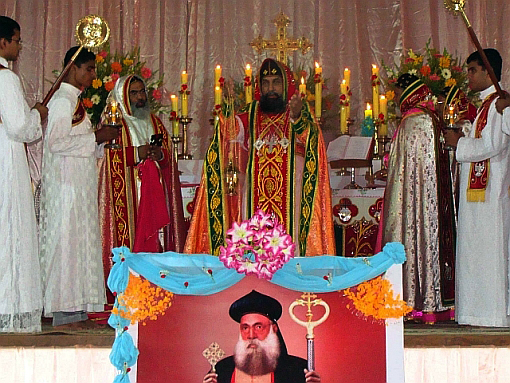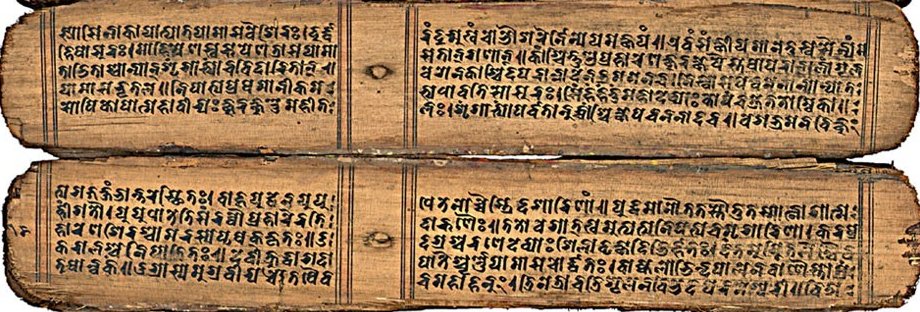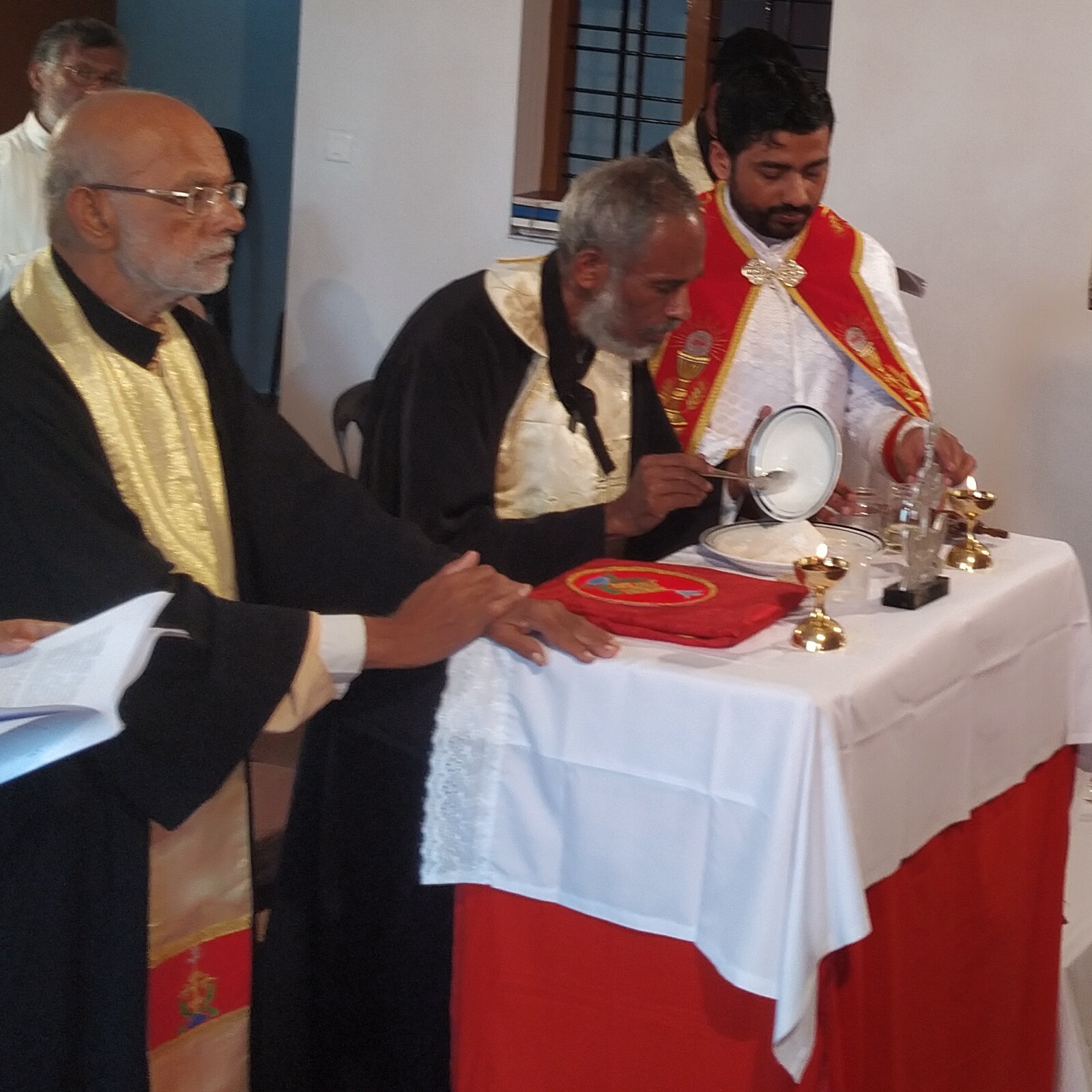|
Malankara Rite
The Malankara Rite is the form of the West Syriac liturgical rite practiced by several churches of the Saint Thomas Christian community in Kerala, India. West Syriac liturgy was brought to India by the Syriac Orthodox Bishop of Jerusalem, Gregorios Abdal Jaleel, in 1665; in the following decades the Malankara Rite emerged as the liturgy of the ''Malankara Church'', one of the two churches that evolved from the split in the Saint Thomas Christian community in the 17th century. Today it is practiced by the various churches that descend from the Malankara Church, namely the Malankara Mar Thoma Syrian Church, Malankara Orthodox Syrian Church (Indian Orthodox Church), the Jacobite Syrian Christian Church, the Syro-Malankara Catholic Church and the Malabar Independent Syrian Church History The West Syriac Rite developed out of the ancient Antiochene Rite, emerging in the 5th and 6th century with the adoption of Syriac, rather than Greek, as the liturgical language of the non-Chalcedon ... [...More Info...] [...Related Items...] OR: [Wikipedia] [Google] [Baidu] |
West Syriac Rite
The West Syriac Rite, also called Syro-Antiochian Rite, is an Eastern Christian liturgical rite that employs the Divine Liturgy of Saint James in the West Syriac dialect. It is practised in the Maronite Church, the Syriac Orthodox Church, the Syriac Catholic Church and various Malankara Churches of India (see the section on usage below). It is one of two main liturgical rites of Syriac Christianity, the other being the East Syriac Rite. It originated in the ancient Patriarchate of Antioch. It has more anaphoras than any other rite. Many new texts translated from Greek were accepted among the Syriac Orthodox of Antioch. Those associated with Tagrit did not accept them. In essence it is the Tagrit tradition that was introduced into Kerala in the 18th and 19th centuries. Usage Versions of the West Syriac Rite are currently used by three groups of churches. * Oriental Orthodox Churches: ** Syriac Orthodox Church of Antioch based in Syria. *** Jacobite Sy ... [...More Info...] [...Related Items...] OR: [Wikipedia] [Google] [Baidu] |
Liturgical Language
A sacred language, holy language or liturgical language is any language that is cultivated and used primarily in church service or for other religious reasons by people who speak another, primary language in their daily lives. Concept A sacred language is often the language which was spoken and written in the society in which a religion's sacred texts were first set down; these texts thereafter become fixed and holy, remaining frozen and immune to later linguistic developments. (An exception to this is Lucumí, a ritual lexicon of the Cuban strain of the Santería religion, with no standardized form.) Once a language becomes associated with religious worship, its believers may ascribe virtues to the language of worship that they would not give to their native tongues. In the case of sacred texts, there is a fear of losing authenticity and accuracy by a translation or re-translation, and difficulties in achieving acceptance for a new version of a text. A sacred language is ty ... [...More Info...] [...Related Items...] OR: [Wikipedia] [Google] [Baidu] |
Parambil Thoma
Mar Thoma I, also known as Valiya Mar Thoma (''Mar Thoma the Great'') and Arkkadiyokkon Thoma (''Archdeacon Thomas'') in Malayalam and Thomas de Campo in Portuguese was the first native-born, popularly-selected Metropolitan bishop of the 17th-century Malankara Church. He was the last Archdeacon of the undivided St. Thomas Christians of Malankara (Maliyankara). After the death of Archdeacon George of the Cross on 25 July 1640, Parambil Thoma Kathanar was elected and enthroned as new Archdeacon, when he was less than 30 years old. He led the Church to the Coonan Cross Oath on 3 January 1653 and to the subsequent schism in Nasrani Church. After the Oath, he was elected as a Bishop by the Malankara (Yogam) Association and consecrated as a Bishop at St. Mary's Church Alangad, by laying hands of 12 priests on 22 May 1653. However, some factions of the community, including two Southist churches of Kaduthuruthy and Udayamperoor refused to recognise him as Bishop. The archdeacon ... [...More Info...] [...Related Items...] OR: [Wikipedia] [Google] [Baidu] |
Ahatallah
Ahatallah (1590 – c. 1655) was a Syrian bishop chiefly known for his trip to India in 1652. His mysterious appearance in, and disappearance from Portuguese India caused a great uproar there, and resulted directly in a revolt by the Saint Thomas Christians against Portuguese rule and the establishment of an independent Malankara Church. Biography Ahatallah's biography is obscure. Many earlier scholars, including the Lebanese Orientalist Joseph Simon Assemani and Edward René Hambye, believed he was a Jacobite, a member of the Syriac Orthodox Church.Vadakkekara, pp. 80–81 and note. However, later research by Joseph Thekedathu, relying on additional documents found in the archives in the Vatican and Goa, has established further details of his life.Neill, p. 317. He was born in Aleppo, Syria, in 1590, and did enter the Syriac Orthodox Church, eventually being consecrated Bishop of Damascus. While bishop he converted to the Catholic Church, and in 1632 he traveled to Rome. He s ... [...More Info...] [...Related Items...] OR: [Wikipedia] [Google] [Baidu] |
Portuguese India
The State of India ( pt, Estado da Índia), also referred as the Portuguese State of India (''Estado Português da Índia'', EPI) or simply Portuguese India (), was a state of the Portuguese Empire founded six years after the discovery of a sea route to the Indian subcontinent by Vasco da Gama, a subject of the Kingdom of Portugal. The capital of Portuguese India served as the governing centre of a string of military forts and trade posts scattered all over the Indian Ocean. The first viceroy, Francisco de Almeida established his base of operations at Fort Manuel, after the Kingdom of Cochin negotiated to become a protectorate of Portugal in 1505. With the Portuguese conquest of Goa from the Bijapur Sultanate in 1510, Goa became the major anchorage for the Portuguese Armadas arriving in India. The capital of the viceroyalty was transferred from Cochin in the Malabar region to Goa in 1530. From 1535, Mumbai (Bombay) was a harbour of Portuguese India as '' Bom Bahia'' ... [...More Info...] [...Related Items...] OR: [Wikipedia] [Google] [Baidu] |
Patriarch Of Antioch
Patriarch of Antioch is a traditional title held by the bishop of Antioch (modern-day Antakya, Turkey). As the traditional "overseer" (ἐπίσκοπος, ''episkopos'', from which the word ''bishop'' is derived) of the first gentile Christian community, the position has been of prime importance in Pauline Christianity from its earliest period. This diocese is one of the few for which the names of its bishops from the apostolic beginnings have been preserved. Today five churches use the title of patriarch of Antioch: one Oriental Orthodox (the Syriac Orthodox Church); three Eastern Catholic (the Maronite, Syriac Catholic, and Melkite Greek Catholic Churches); and one Eastern Orthodox (the Greek Orthodox Church of Antioch). According to the pre-congregation church tradition, this ancient patriarchate was founded by the Apostle Saint Peter. The patriarchal succession was disputed at the time of the Meletian schism in 362 and again after the Council of Chalcedon in 451, whe ... [...More Info...] [...Related Items...] OR: [Wikipedia] [Google] [Baidu] |
Archdeacon
An archdeacon is a senior clergy position in the Church of the East, Chaldean Catholic Church, Syriac Orthodox Church, Anglican Communion, St Thomas Christians, Eastern Orthodox churches and some other Christian denominations, above that of most clergy and below a bishop. In the High Middle Ages it was the most senior diocesan position below a bishop in the Catholic Church. An archdeacon is often responsible for administration within an archdeaconry, which is the principal subdivision of the diocese. The ''Oxford Dictionary of the Christian Church'' has defined an archdeacon as "A cleric having a defined administrative authority delegated to him by the bishop in the whole or part of the diocese.". The office has often been described metaphorically as that of ''oculus episcopi'', the "bishop's eye". Roman Catholic Church In the Latin Catholic Church, the post of archdeacon, originally an ordained deacon (rather than a priest), was once one of great importance as a senior offic ... [...More Info...] [...Related Items...] OR: [Wikipedia] [Google] [Baidu] |
Syro-Malabar Rite
lat, Ecclesia Syrorum-Malabarensium mal, മലബാറിലെ സുറിയാനി സഭ , native_name_lang=, image = St. Thomas' Cross (Chennai, St. Thomas Mount).jpg , caption = The Mar Thoma Nasrani Sliva or Saint Thomas christian cross, the symbol of the Syro-Malabar Church. , abbreviation=SMC, type = Self-governing church ('' sui iuris'') , main_classification = Eastern Catholic , orientation = Eastern Christianity( Syriac Christianity) , scripture = , polity = Episcopal polity , governance=Holy Episcopal Synod of the Syro-Malabar Church, theology = East Syriac theology , leader_title = Pope , leader_name = Francis , leader_title1 = Major Archbishop , leader_name1 = George Alencherry , leader_title3 = Administration , leader_name3 = Major Archiepiscopal Curia , area = India and Nasrani Malayali diaspora ... [...More Info...] [...Related Items...] OR: [Wikipedia] [Google] [Baidu] |
East Syriac Rite
The East Syriac Rite or East Syrian Rite, also called the Edessan Rite, Assyrian Rite, Persian Rite, Chaldean Rite, Nestorian Rite, Babylonian Rite or Syro-Oriental Rite, is an Eastern Christian liturgical rite that employs the Divine Liturgy of Saints Addai and Mari and the East Syriac dialect as its liturgical language. It is one of two main liturgical rites of Syriac Christianity, the other being the West Syriac Rite (Syro-Antiochene Rite). The East Syriac Rite originated in Edessa, Mesopotamia, and was historically used in the Church of the East, the largest branch of Christianity which operated primarily east of the Roman Empire, with pockets of adherents as far as South India, Central and Inner Asia and strongest in the Sasanian (Persian) Empire. The Church of the East traces its origins to the 1st century when Saint Thomas the Apostle and his disciples, Saint Addai and Saint Mari, brought the faith to ancient Mesopotamia, now modern Iraq, the eastern parts of Sy ... [...More Info...] [...Related Items...] OR: [Wikipedia] [Google] [Baidu] |
Persia
Iran, officially the Islamic Republic of Iran, and also called Persia, is a country located in Western Asia. It is bordered by Iraq and Turkey to the west, by Azerbaijan and Armenia to the northwest, by the Caspian Sea and Turkmenistan to the north, by Afghanistan and Pakistan to the east, and by the Gulf of Oman and the Persian Gulf to the south. It covers an area of , making it the 17th-largest country. Iran has a population of 86 million, making it the 17th-most populous country in the world, and the second-largest in the Middle East. Its largest cities, in descending order, are the capital Tehran, Mashhad, Isfahan, Karaj, Shiraz, and Tabriz. The country is home to one of the world's oldest civilizations, beginning with the formation of the Elamite kingdoms in the fourth millennium BC. It was first unified by the Medes, an ancient Iranian people, in the seventh century BC, and reached its territorial height in the sixth century BC, when Cyrus the Great founded ... [...More Info...] [...Related Items...] OR: [Wikipedia] [Google] [Baidu] |
Nestorianism
Nestorianism is a term used in Christian theology and Church history to refer to several mutually related but doctrinarily distinct sets of teachings. The first meaning of the term is related to the original teachings of Christian theologian Nestorius (d. 450), who promoted specific doctrines in the fields of Christology and Mariology. The second meaning of the term is much wider, and relates to a set of later theological teachings, that were traditionally labeled as Nestorian, but differ from the teachings of Nestorius in origin, scope and terminology. The ''Oxford English Dictionary'' defines Nestorianism as "The doctrine of Nestorius, patriarch of Constantinople (appointed in 428), by which Christ is asserted to have had distinct human and divine persons." Original Nestorianism is attested primarily by works of Nestorius, and also by other theological and historical sources that are related to his teachings in the fields of Mariology and Christology. His theology was in ... [...More Info...] [...Related Items...] OR: [Wikipedia] [Google] [Baidu] |
Church Of The East
The Church of the East ( syc, ܥܕܬܐ ܕܡܕܢܚܐ, ''ʿĒḏtā d-Maḏenḥā'') or the East Syriac Church, also called the Church of Seleucia-Ctesiphon, the Persian Church, the Assyrian Church, the Babylonian Church or the Nestorian Church, was an Eastern Christian church of the East Syriac Rite, based in Mesopotamia. It was one of three major branches of Eastern Christianity that arose from the Christological controversies of the 5th and 6th centuries, alongside the Oriental Orthodox Churches and the Chalcedonian Church. During the early modern period, a series of schisms gave rise to rival patriarchates, sometimes two, sometimes three. Since the latter half of the 20th century, three churches in Iraq claim the heritage of the Church of the East. Meanwhile, the East Syriac churches in India claim the heritage of the Church of the East in India. The Church of the East organized itself in 410 as the national church of the Sasanian Empire through the Council of Se ... [...More Info...] [...Related Items...] OR: [Wikipedia] [Google] [Baidu] |






